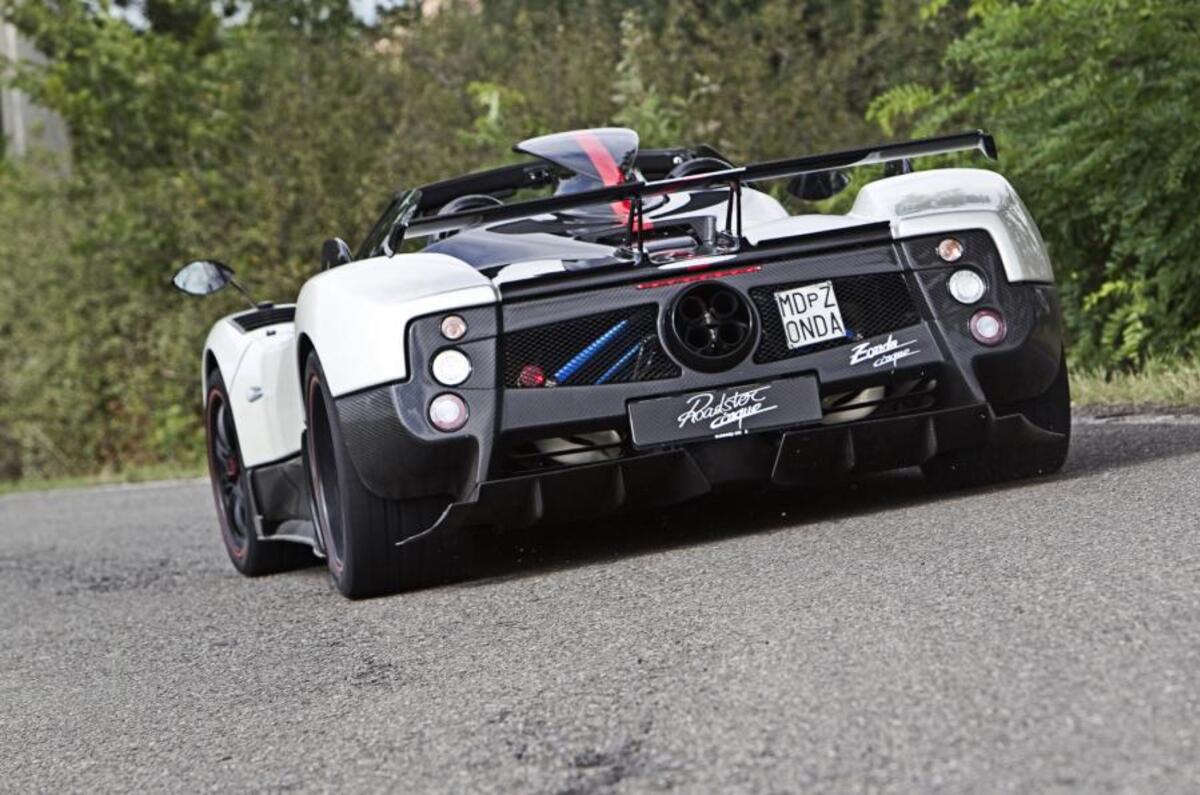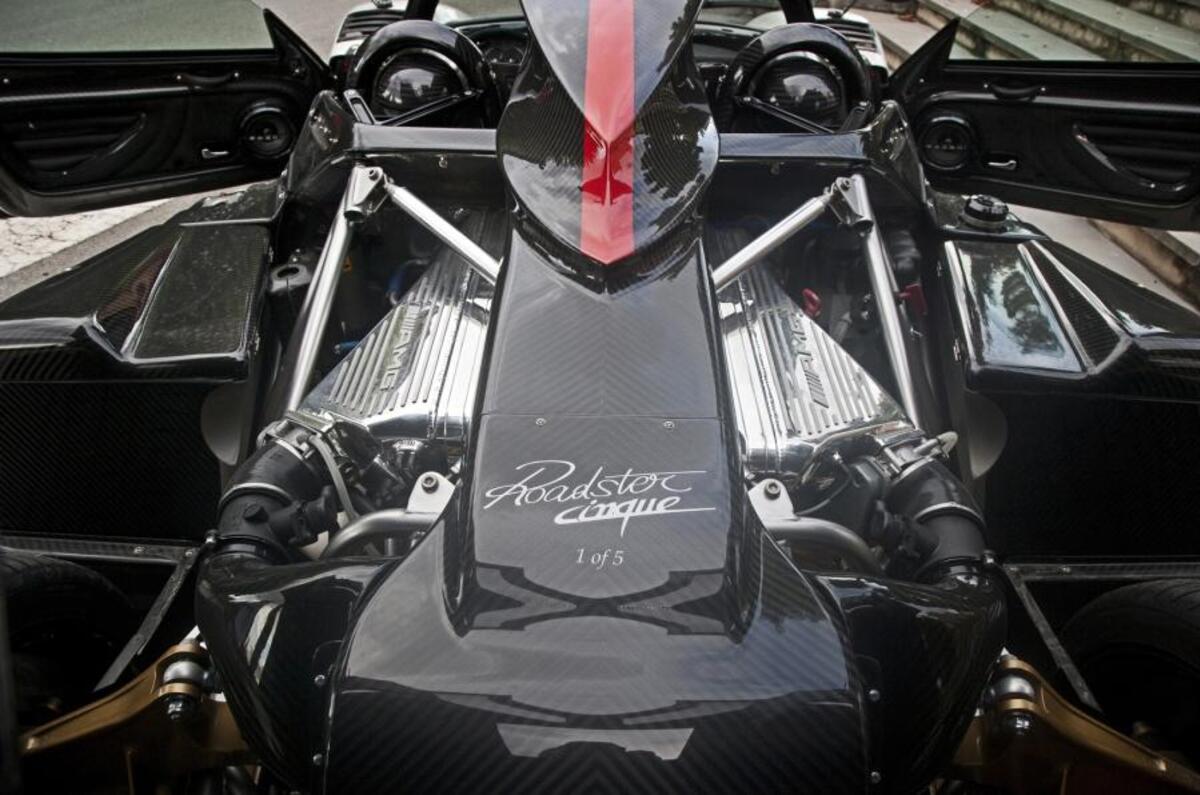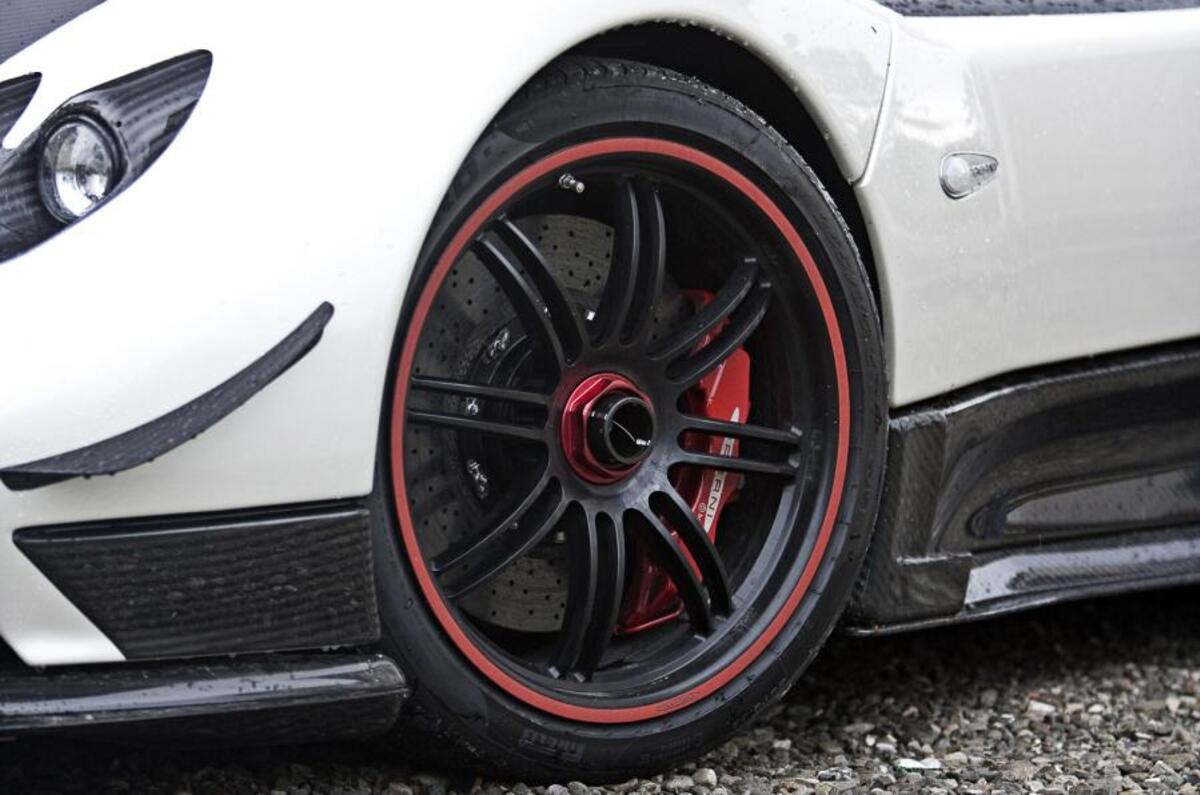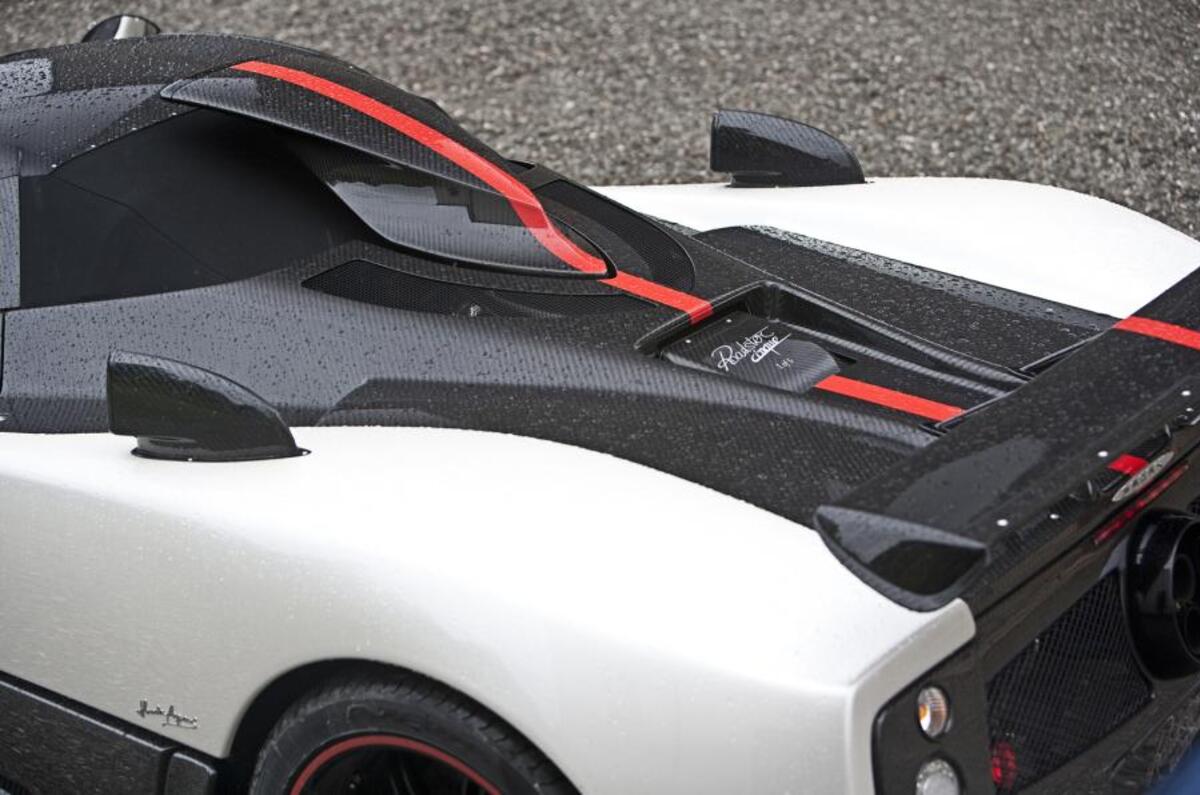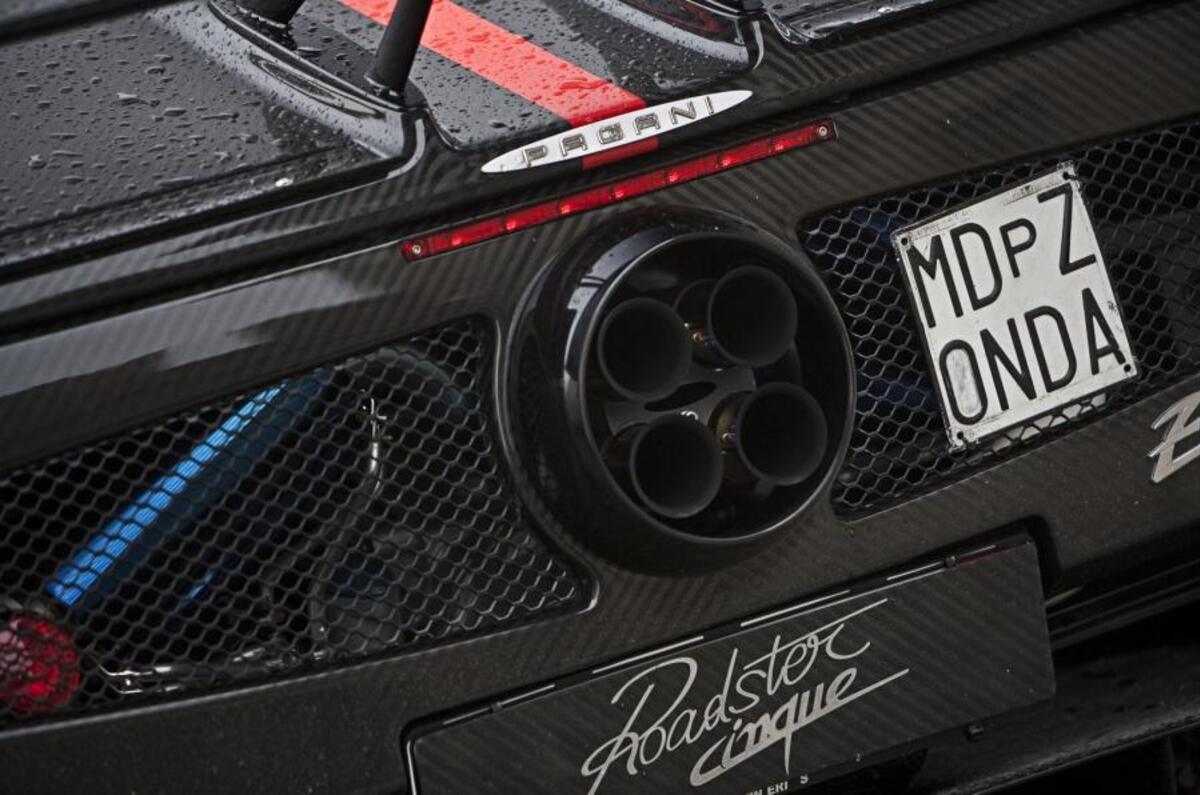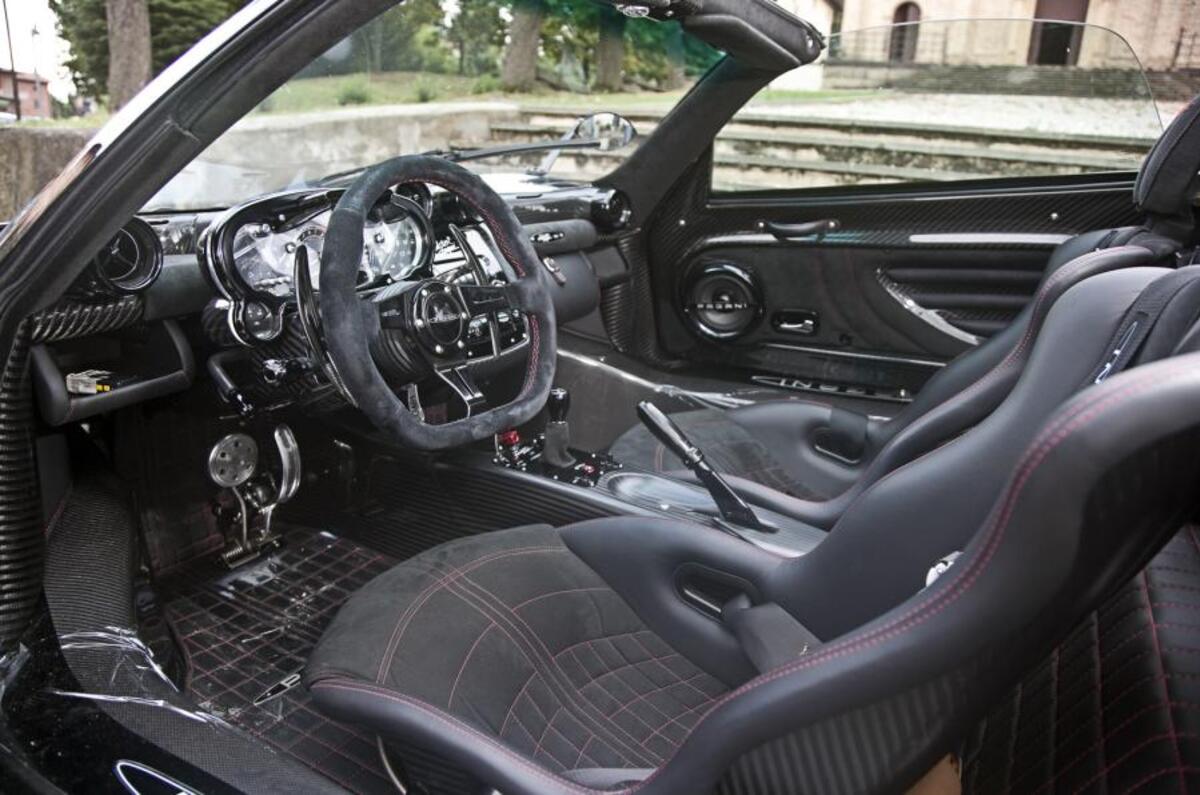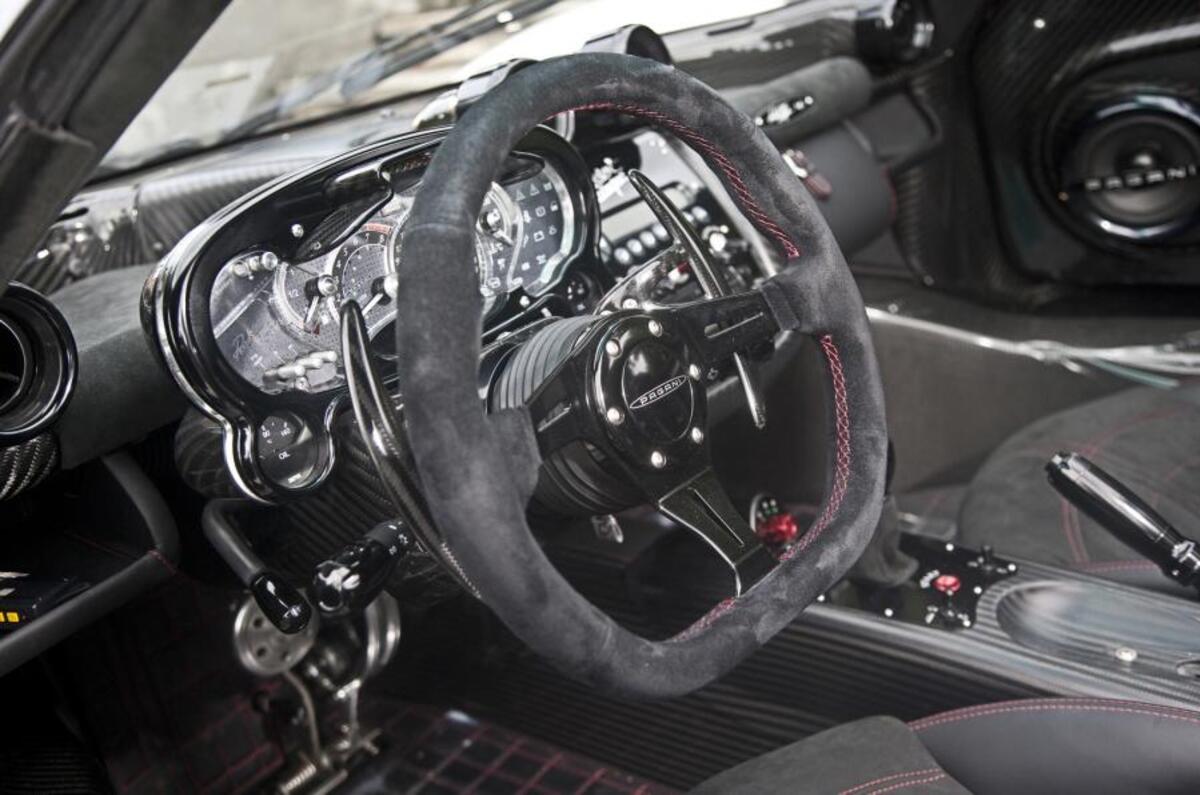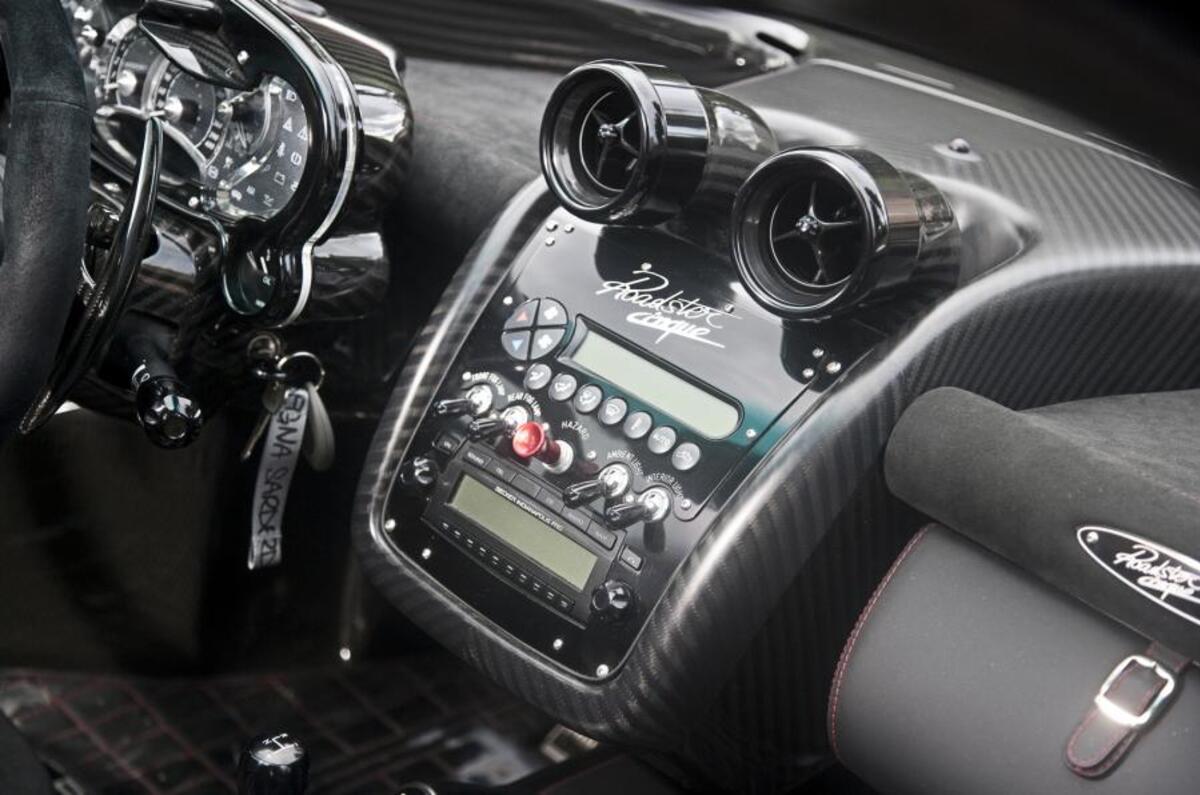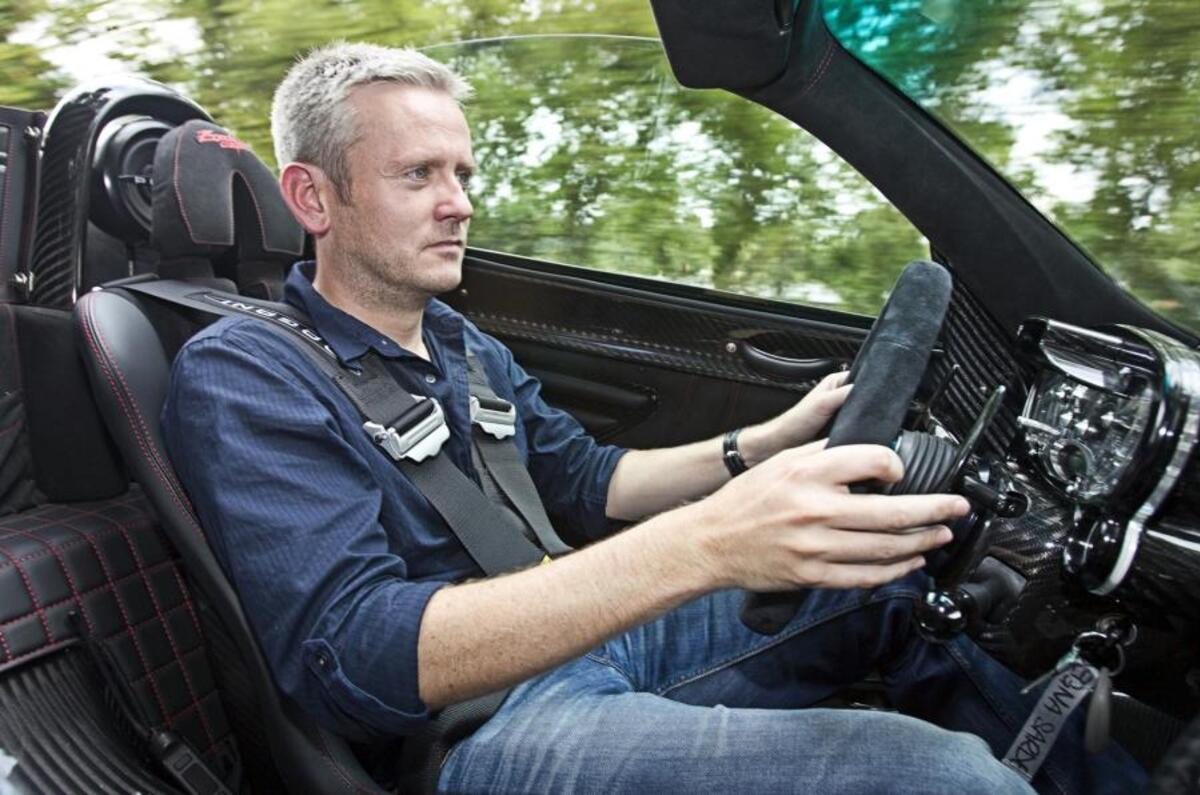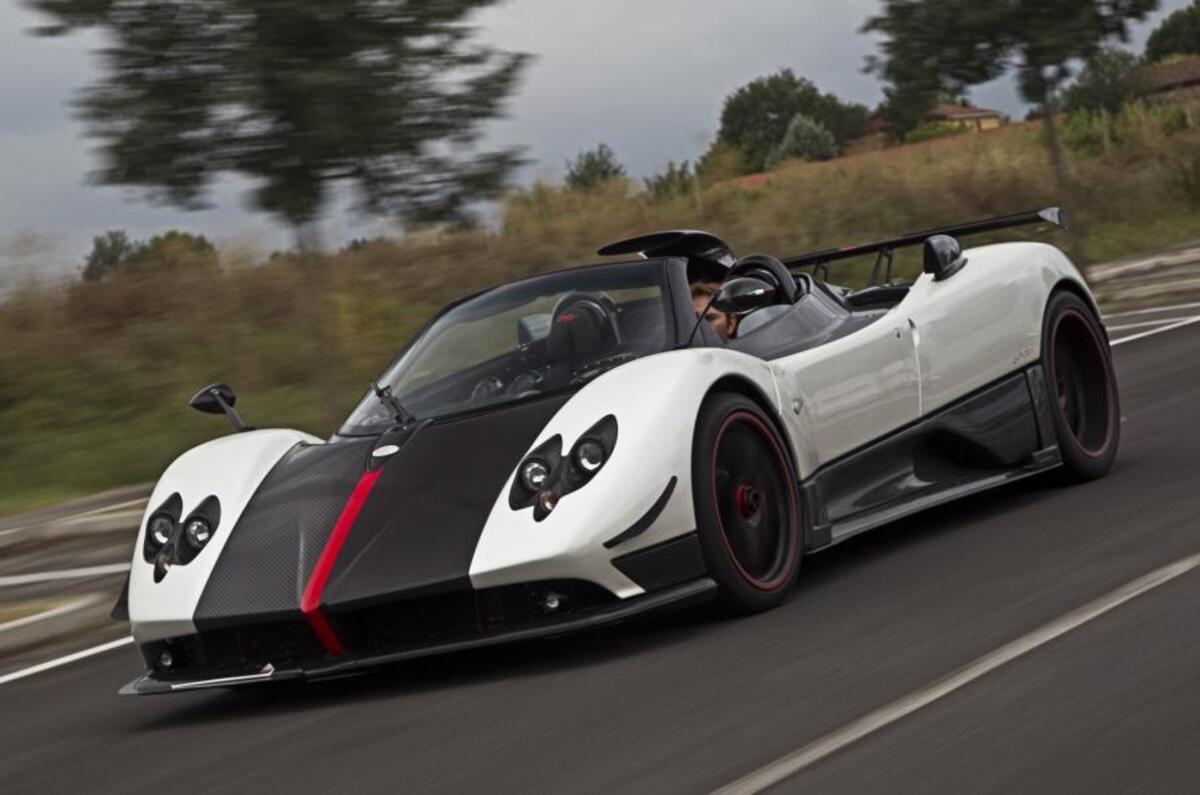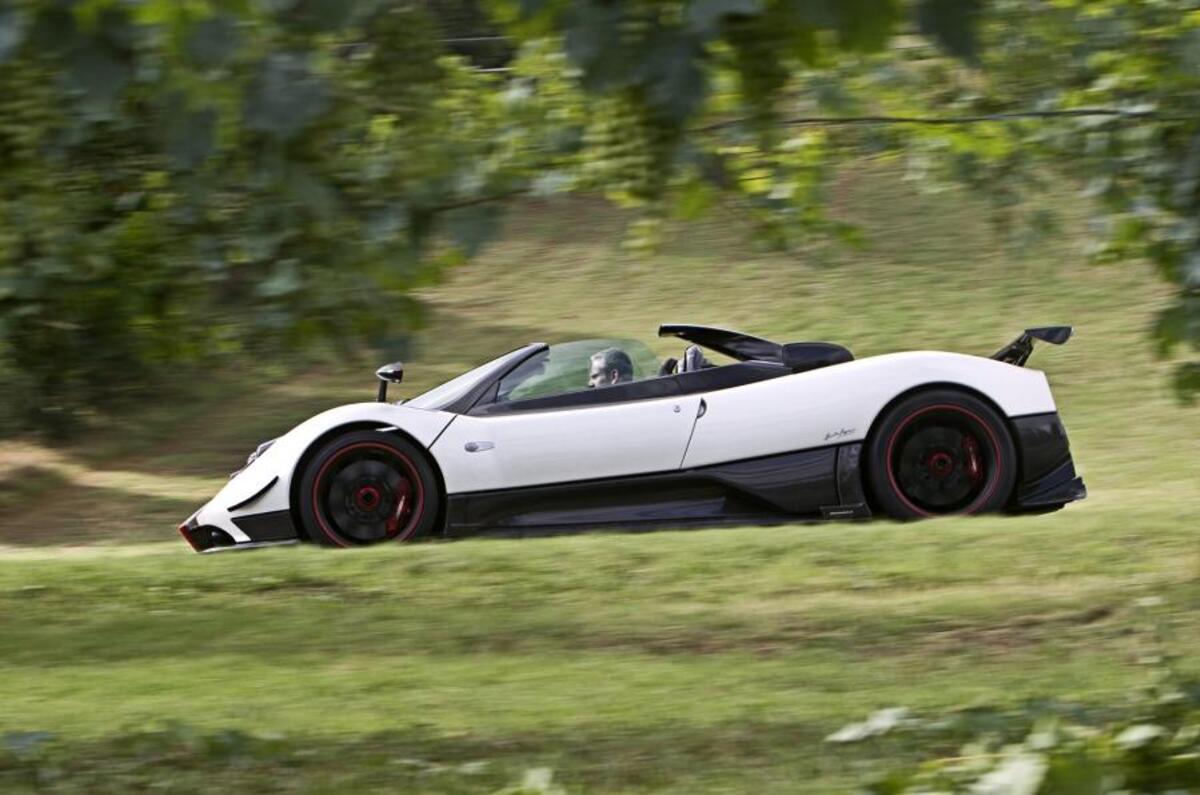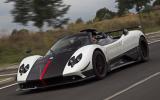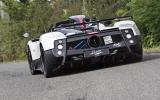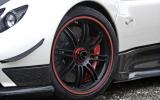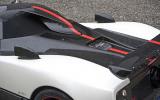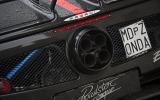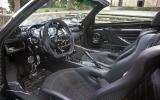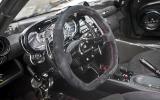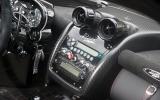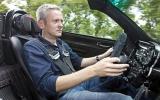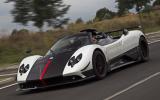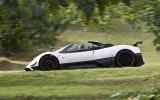Mental and outrageously expensive. The Cinque Roadster is the run-out version of Zonda supercar, because after more than 10 years of production, Pagani will replace the Zonda next year with an all-new model.
Obviously, for anyone that speaks Italian, there will be just five Cinque Roadsters, to add to the five coupe versions, each costing 1.3 million Euro (£1.07m) before local taxes.
Given that the original Zonda C12 cost less than a fifth of that price, you might be wondering how Pagani can charge so much. Partly it is because through the Zonda’s life it has gradually evolved from an already mighty supercar into a full-blown hypercar; its 7.3-litre V12 now produces 669bhp.
The Cinque also borrows from the track-only R version, with a monocoque constructed from carbon-titanium (a new material developed by Pagani, which is stronger than the regular carbonfibre) and a revised front splitter, airbox, and undertray.
However we suspect the real reason the Cinque costs so much, is that with such a limited production run, there are customers out there willing to pay the price.
Everything you would hope for in a million-pound supercar. Extrovert styling, wonderful details, monumentally loud (to hear how loud - see our video) and ludicrously fast. At 1210kg (dry) the Cinque is lighter than the regular Zonda F, meaning even allowing 100kg for fluids it has power and torque to weight ratios comparable with a Bugatti Veyron.



